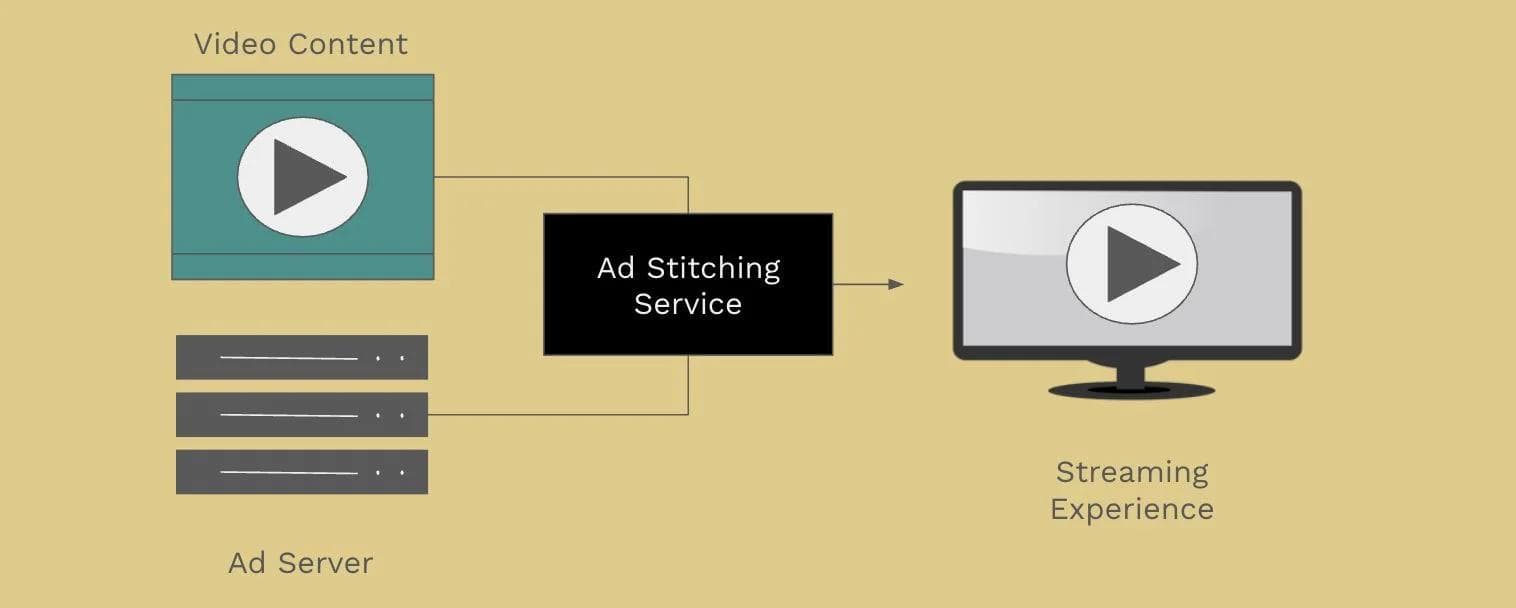Articles
The Rise of SSAI (Server Side Ad Insertion) in Streaming Services
BY Econify
•Fri, Mar 14, 2025

Having just spent the last couple of days at the Connected TV Summit in London, there were some key takeaways worth sharing. One major trend that stood out was the shift in business models for subscription-based streaming services. Over the past 24 months, we've seen a significant pivot — platforms are increasingly offering ad-supported tiers in exchange for discounted subscriptions. This shift, coupled with the rise of FAST (Free Ad-Supported TV) services, highlights the growing importance of ad monetization in the streaming landscape.
While the average UK household subscribes to 2.3 streaming services, the US figure is notably higher at 4.9 services. With rising costs of living and economic pressures, consumers are seeking more cost-effective entertainment options. As a result, ad insertion has become a crucial growth driver for streaming platforms.
Ad Supported Models Are Growing
In the past year, we've seen a notable increase in ad-supported OTT content. As subscription fatigue sets in and subscription growth starts to flatline, consumers are more willing to accept ads in exchange for reduced subscription fees or free content. According to Hub Research, 66% of US viewers now prefer ad-supported streaming services over ad-free alternatives — with younger audiences particularly tolerant of ads in live TV environments.
The Technical Challenge of Delivering Ads in Streaming Apps
As ad-supported models gain traction, a technical challenge emerges: how best to insert ads into the streaming experience. Traditionally, this has been achieved via Client-Side Ad Insertion (CSAI), where ads are loaded directly into the video player on the user’s device. However, Server-Side Ad Insertion (SSAI) is becoming the preferred solution for many streaming services, and we've observed this shift in our recent client work. According to Global Growth Insights, SSAI adoption for ad delivery is expected to grow by 40% in the coming year.
Why Choose SSAI Over CSAI?
SSAI offers several compelling advantages that make it an increasingly attractive option for OTT platforms:
- Improved User Experience: SSAI enables seamless transitions between content and ads, reducing buffering and enhancing engagement rates. Ads feel like a natural part of the stream rather than disruptive interruptions.
- Enhanced Targeting Capabilities: SSAI platforms support dynamic ad decisioning, allowing advertisers to deliver personalized ads tailored to individual viewers.
- Ad Blocker Resistance: Since ads are stitched directly into the video stream, they bypass traditional ad blockers, ensuring higher ad delivery rates and improved monetization.
- Ad Fraud Prevention: SSAI mitigates common fraud risks such as bot traffic or invalid ad impressions, improving ROI for advertisers.
- Cross-Device Compatibility: Unlike CSAI, SSAI does not require customized SDKs for each platform. Instead, stitched ads naturally integrate across smart TVs, streaming sticks, and gaming consoles, simplifying development efforts.
Key Considerations When Implementing SSAI
While SSAI offers many benefits, successful implementation requires careful planning. Here are some important considerations:
1. Consent Management
Ensure your platform accounts for user consent regarding personalized ads and data tracking. Integrating solutions like OneTrust can help manage compliance with regulations such as GDPR and CCPA.
2. Edge Case Handling
Effective planning is crucial to prevent frustrating user experiences. For example:
- If a viewer exits content shortly after starting, they shouldn't be forced to watch an ad reel again upon resuming.
- Implement frequency capping to limit repeated exposure to the same ads, enhancing the viewer experience.
- When inserting ads mid-content, ensure your system understands appropriate break points to avoid disrupting dialogue or key moments.
3. Comprehensive Testing
Conduct thorough testing across different devices, platforms, and network conditions. Consider investing in TV Labs or device farms to test SSAI performance in various real-world environments.
4. Complexities
While Server-Side Ad Insertion offers smoother ad experiences and better ad delivery rates, it introduces new complexities in the playback flow that require careful handling to maintain a seamless user experience. For example, SSAI is reliant on third-party services, such as ad decision servers (ADS), content delivery networks (CDNs), and tracking platforms. If any of these services fail or respond slowly, playback may be delayed or interrupted. In this case, fallback mechanisms and timeout logic should be considered to mitigate the impact of any service downtime or slowness.
Final Thoughts
As the OTT landscape continues to evolve, SSAI is proving to be a powerful solution for delivering seamless, effective ad experiences. Implementing SSAI is only going to become more prevalent as more platforms adopt it. Addressing the technical challenges and implementing best practices, they can unlock significant growth potential in an increasingly ad-supported ecosystem.
If you are looking for a development partner or expertise in OTT development, get in touch.